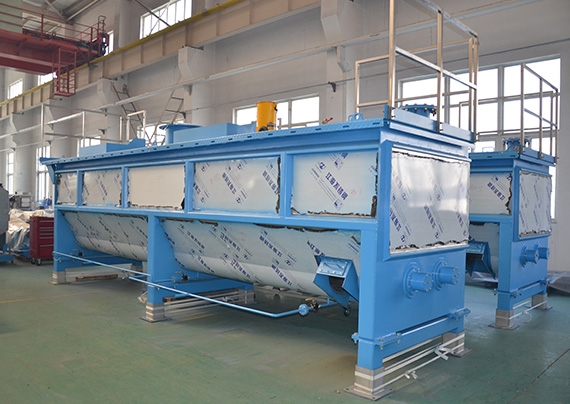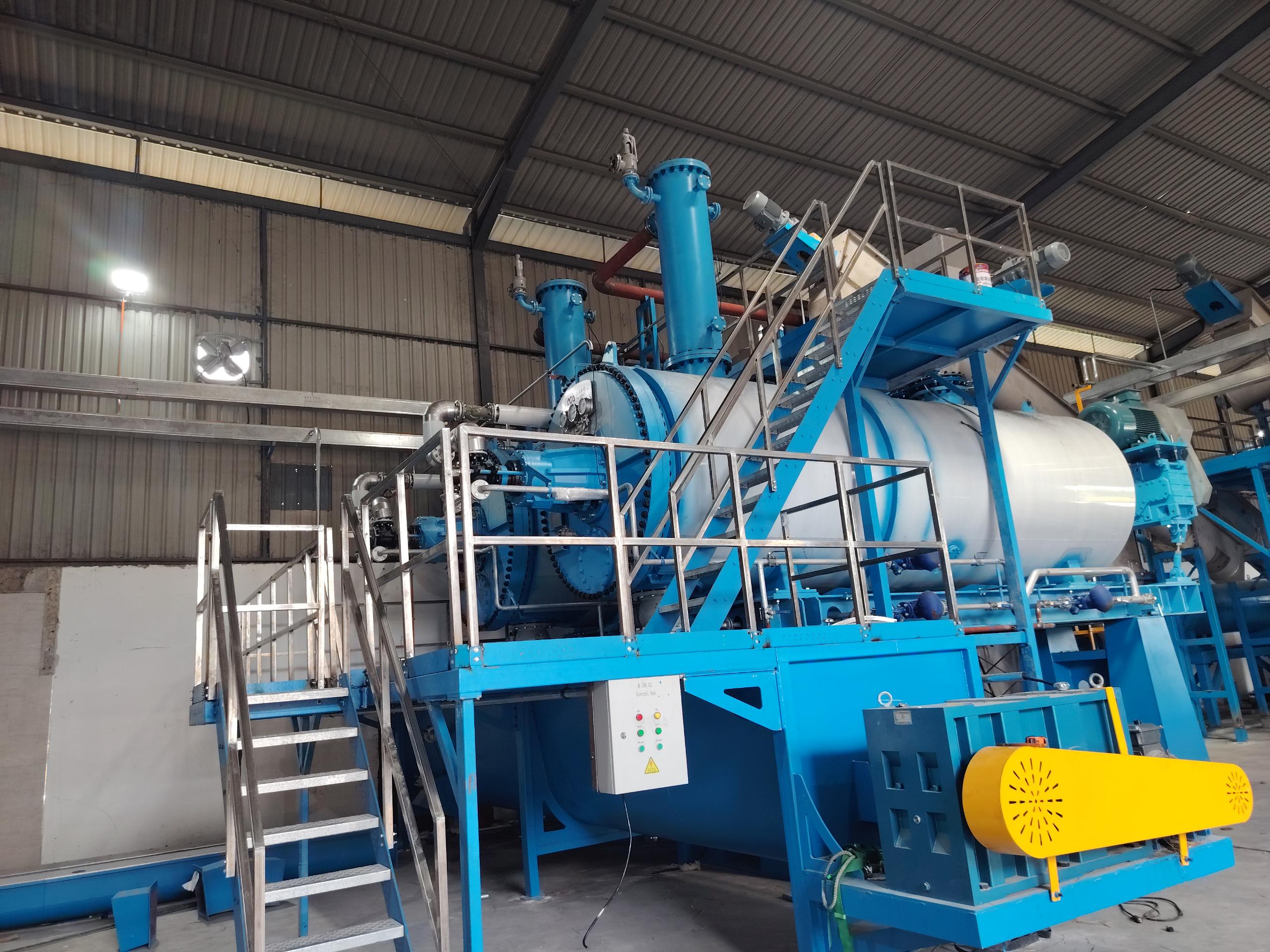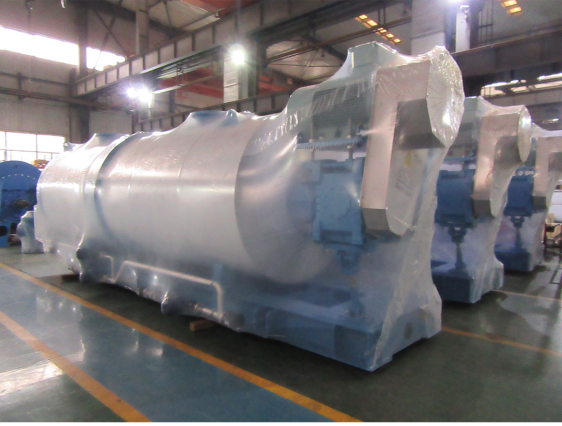
Rendering Plant Process: From Waste to Valuable Resources
Rendering Plant Process: From Waste to Valuable Resources
Rendering plants are essential to the Rendering Plant Process of converting animal by-products, waste materials, and fats into valuable commodities like protein-rich animal feed, biodiesel, and industrial ingredients. The intricate rendering process involves a series of well-coordinated steps that efficiently convert what might seem like waste into valuable resources. This blog will delve into the fascinating world of rendering plants, exploring the steps involved and highlighting the significance of crucial machinery with a particular focus on SunRise–a notable rendering plant machine supplier.
Maximizing Efficiency and Cost Savings: The Inner Workings of a Rendering Plant Process
1. Enhanced Production Cost Management
When it comes to the bottom line, production cost management stands as a cornerstone of any successful business. Rendering plants are no exception. Efficient production processes lead to reduced waste, optimized resource utilization, and streamlined operations. This, in turn, translates to lower production costs. Imagine a scenario where every step of the rendering process, from raw material intake to final product creation, is meticulously designed to minimize resource wastage. This not only reduces operational expenses but also enhances overall profitability.
2. The Price Advantage Conundrum
In a competitive market, the ability to offer competitive prices is crucial. Rendering plants that operate efficiently can often pass on the benefits of cost savings to their customers. This creates a significant price advantage, making their products more appealing to a wider range of consumers. Efficient processes allow for quicker production cycles, translating to increased output within the same timeframe. As a result, these plants can manage higher production volumes without compromising quality or price, positioning themselves as market leaders.
3. Optimized Supply Chain Management
Efficient rendering plants are well-oiled machines not only within their walls but also in their interactions with suppliers and customers. A streamlined process enables accurate production forecasting, reducing the risk of overproduction or underproduction. This, in turn, fosters better communication with suppliers, ensuring the timely delivery of raw materials. SunRise, a reliable rendering plant machine supplier, plays a pivotal role in this aspect. Their state-of-the-art machinery and equipment contribute to the seamless functioning of rendering plants, boosting the entire supply chain’s efficiency.

The Rendering Process Unveiled
1. Collection and Preparation of Raw Materials
Rendering plants source their raw materials from various sources, including slaughterhouses, butchers, and farms. These materials include animal carcasses, fatty tissues, bones, and offal. The first step involves collecting and transporting these materials to the rendering plant. Once delivered, the materials undergo sorting and preliminary processing to remove contaminants such as dirt, hair, and foreign objects.
2. Cooking and Rendering
The sorted materials are then subjected to the cooking process, which serves to separate the different components. During this step, the materials are heated at high temperatures using steam in specialized rendering equipment. The heat effectively breaks down the fat and protein content, separating them from the solid matter. This process also eliminates any potential pathogens, making the resulting products safer for further use.
3. Centrifugation and Separation
After cooking, the mixture goes through a centrifuge, a critical step for separating the liquid and solid components. The lighter fat and oil rise to the top, while heavier solids settle at the bottom. This separation allows for the extraction of high-quality fats and oils that can be refined for various applications, including the production of biodiesel.
4. Drying and Grinding
The solid remnants from the centrifugation step are dried to reduce moisture content. This dried material is then ground into a fine powder or meal. This meal can be used as a source of protein and nutrients in animal feed. The grinding process ensures that the nutrients are easily digestible and can be effectively incorporated into feed formulations.
SunRise Rendering Machines: Tailored Solutions for Varied Industries
1. Collection and Sorting Equipment
SunRise offers a range of collection and sorting machines that aid in the Rendering Plant Process. These machines efficiently gather animal by-products and organic waste, ensuring a steady supply for the rendering process. From conveyor belts to shredders, SunRise’s collection equipment is designed to cater to the specific needs of diverse industries, such as agriculture, food processing, and pharmaceuticals.
2. Grinding and Cooking Machinery
The grinding and cooking phase is pivotal in breaking down the materials and separating valuable components. SunRise provides cutting-edge grinders and cookers that are optimized for efficiency and quality. These machines are engineered to process a wide range of raw materials, offering flexibility to rendering plants serving different industries.
3. Centrifugation and Separation Systems
Efficient separation is the hallmark of a successful rendering process. SunRise’s centrifugation equipment ensures the effective separation of fats and liquids from solids, contributing to the creation of high-quality end products. This machinery is indispensable for rendering plants catering to the cosmetic, soap, and pet food industries.
4. Drying and Grinding Solutions
The final steps involve drying and grinding the remaining solid material to produce valuable products like bone meal and protein-rich supplements. SunRise’s advanced drying and grinding machines are designed with precision to maintain the nutritional value of the end products. These solutions are tailored to meet the demands of agriculture, fertilizer, and animal feed sectors.
SunRise: Elevating the Rendering Process
In an era where sustainability takes center stage, rendering plants have a crucial role to play. SunRise, as a rendering plant machine supplier, understands the importance of environmental responsibility. Their machines are engineered to maximize resource recovery while minimizing waste and energy consumption. This aligns with the goals of industries striving to adopt greener practices.
At the heart of every efficient rendering plant lies a range of machinery designed to optimize each step of the process. SunRise, a prominent rendering plant machine supplier, has been at the forefront of delivering cutting-edge equipment to the rendering industry.
SunRise offers a comprehensive range of rendering machines, including cookers, centrifuges, dryers, and crushers, all crafted with precision to ensure maximum efficiency and safety. Their technology is designed to enhance yield, minimize energy consumption, and reduce environmental impact, making them an ideal partner for rendering plants striving for sustainable practices.
Conclusion
Rendering plants are unsung heroes in the realm of waste management and resource utilization. Through a meticulous process of collection, cooking, separation, and refining, these facilities transform animal by-products and waste materials into valuable resources like animal feed and biodiesel. The role of machinery in this process cannot be overstated. SunRise, with its state-of-the-art rendering plant equipment, stands out as a reliable partner in enhancing the efficiency and sustainability of rendering operations. As the world continues to focus on innovative waste management solutions, rendering plants and suppliers like SunRise pave the way for a greener and more resourceful future.
Categories
Recent Posts
-
Successful Case – Malaysia 50 tons of feathers per day processing project
June 20, 2025 -
Cross-country delivery in progress! Customized production line for Russian customer completed plastic packing, about to set sail!
June 16, 2025 -
From slaughtered chickens to treasure: Sunrise slaughter waste equipment leads the way to high-value utilization
June 11, 2025


